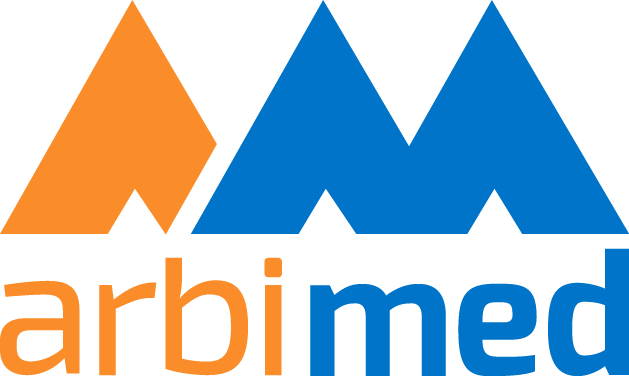Technology can play a vital role in improving patient care and safety. The right tools can, in fact, assist healthcare providers in reducing medical errors, communicating better between clinicians, and encouraging people to be more involved in their care.
In this article, we will go through the present and future of the healthcare industry and how innovative technologies like telemedicine, patient portals, collaboration platforms, AI, and remote patient monitoring can help run practices more efficiently and reduce healthcare costs.
The Rise of Tech Adoption
The tech adoption rate in the healthcare industry had been rising even before the Covid-19 pandemic. However, it has certainly received a boost in the last few years, as remote consultation and digital health monitoring helped reduce the risk of transmission.
One thing is sure: Technology has the potential to completely transform the way healthcare providers offer care. Never before have practices and professionals been able to access so many tools able to assist in diagnosis, treatment, patient safety, and access to care.
Today, it’s impossible to think about the future of healthcare without technological solutions like electronic health records, wearable devices, and digital health tools. So, how are these transforming healthcare infrastructure, and can they really help patient outcomes?
Six Examples of Technology in Healthcare
About 67% of physicians say they will use innovative technologies to run their practices more efficiently and provide better care. There are plenty of alternatives out there, from tools to communicate more easily with patients to portals that garner the power of artificial intelligence and data analytics to identify trends and changes and reduce errors. So, let’s go through them in some more detail. Here are six examples of how technology is revolutionizing healthcare.
Telehealth
Telehealth, or the use of telecommunications and digital technologies to deliver care, is one of these new options that has grown the most during the onset of the Covid-19 pandemic – and continues to do so.
Initially used as a way to maintain social distance, telehealth tools have proven so helpful and convenient, they are now standard practice in many healthcare settings.
Telehealth involves the provision of clinical care but also often works alongside other applications, such as remote monitoring, appointment scheduling tools, and billing platforms. This is why many organizations have turned to it to do remote consultations and real-time tracking daily.
Data Analytics and AI
Data analytics involves collecting, processing, and analyzing large amounts of patient data with the goal of identifying patterns and trends that could be difficult to unearth using traditional methods. Artificial Intelligence (or AI), on the other hand, refers to the use of algorithms and machine learning to make better predictions and aid in decision-making.
Both data analytics and AI are increasingly used in healthcare to improve outcomes, reduce costs, and enhance patient experiences. For example, medical professionals can use these tools for disease diagnosis and treatment, population health management, medical imaging analysis, and predictive analysis.
Collaboration Platforms
Collaboration platforms have also grown in popularity because they can facilitate communication between different healthcare providers, patients, and stakeholders, for example, by allowing them to share files and work together on patient plans.
Other common collaboration platforms include care coordination, patient engagement, and medical education. Combining collaboration platforms with patient data management systems can also help improve patient safety, reducing medication errors and enhancing patient care.
Remote Patient Monitoring
Remote patient monitoring (also referred to as RPM) is a healthcare delivery model that relies on digital technologies to monitor patients when they are outside traditional settings like hospitals or clinics.
RPM involves the use of sensors, wearable devices, and other digital tools that can collect data on a patient’s health status and transmit it to providers for analysis and review. This happens in real time, so it becomes easier to quickly identify changes or trends and deliver more effective care.
Remote patient monitoring technology can be used for monitoring a large range of conditions, including diabetes, heart disease, and other chronic illnesses, improving patient safety and reducing healthcare costs by preventing admissions and readmissions.
Patient Portals
Patient portals are websites or applications that allow patients to securely access their own health information. They also support provider communication, as people can reach out to their physician directly.
Patient portals typically include a range of features such as access to medical records (patients can see lab reports, immunization records, medications, and medical alerts), appointment scheduling (to book appointments and receive reminders), prescription refills, and advice.
This technology provides people with a convenient tool they can access at any time, prompting them to take a more active role in their own healthcare and improving engagement. Additionally, patient portals can also improve practice efficiency by reducing administrative tasks and allowing providers to spend more time on patient safety and care.
Inventory Management Software
Inventory management systems are a type of software that can help organizations keep track of all medications and quickly discover which ones are obsolete – which can save time, reduce waste, and improve care as your practice can be sure it will always have the necessary supplies and equipment at hand.
For instance, tools like ArbiMed are designed to allow practices to forecast stock levels, solve data inconsistencies, and request new materials all from the same location, and they are becoming increasingly common in many healthcare settings like hospitals, pharmacies, and laboratories. Many also include features to do automated ordering, barcode scanning, and reporting, and can integrate with other healthcare services and systems, such as electronic health records and supply chain management systems.
Conclusion
Telehealth, data analytics, collaboration platforms, remote patient monitoring, and patient portals all play a significant role in pushing health information technology forward. These tools have proven effective in reducing medication errors, improving patient safety outcomes, and overall aiding healthcare professionals to provide better care.
Healthcare technologies are a vital component of the shift toward digital health and can transform how care is delivered.


